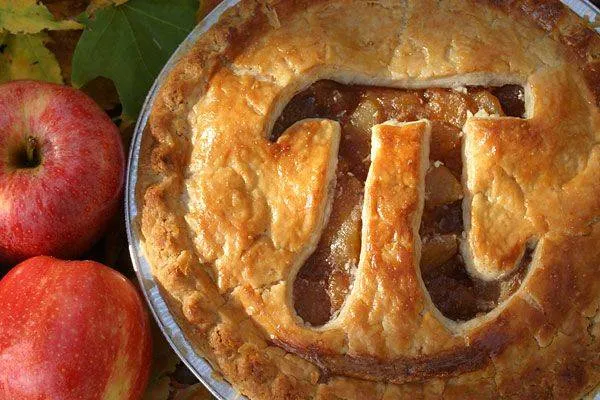
A Pi Day Reading List
This is a guest post from Sarah Rettger. Sarah spends her nights selling books (in all formats) at an independent bookstore outside Boston, and her days working on a graduate degree in between Twitter breaks. Follow her on Twitter @SarahRettger.
In honor of Pi Day, the international celebration of math on March 14, now’s the time to make sure you have an adequate reading list for the occasion. Should you find yourself coming up short, here are a few suggestions:
E=MC2 by David Bodanis. Pi Day happens to coincide with Einstein’s birthday, so start off with a biography of his major discovery. Because famous equations deserve proper biographies just as much as famous people do, and this one is particularly well written, and doesn’t expect you to just magically understand how physics works.
All of the Above by Shelley Pearsall. A group of middle school students set out to build a record-breaking tetrahedron, but in their inner-city school, figuring out the geometry is only part of the challenge. There’s a hint of Stand and Deliver: The Early Years, along with a lot of intellectual passion.
Professor Stewart’s Cabinet of Mathematical Curiosities by Ian Stewart. If I tell you it’s a book of math problems, you’re going to laugh at me and pick up something more interesting, like the phone book (or yp.com, if you prefer). So let’s call it a math narrative. This isn’t a sheet of questions you have to answer for tomorrow’s homework. It’s about understanding basic and esoteric concepts, as explained by a mathematician who knows something about writing too.
Moneyball by Michael Lewis. Sure, it’s about baseball, but really, it’s about math, and about how knowing what to measure is as important as the numbers themselves. Here’s how to make numbers — and number-crunchers — play a winning season for all concerned.
A Brief History of Time by Stephen Hawking. It’s a classic for a reason. I first read the book when it was assigned in AP English, and I got far more out of it than most of the novels we read that year. If Moneyball is math at its most avaricious, this is math at its most beautiful.
The Time Book by Martin Jenkins. If Hawking feels a little over your head, pay a visit to the children’s section for this one. It looks like a picture book — and part of its charm comes from Richard Bolland’s eye-catching illustrations — but it offers a thorough grounding in the ways humans have tried to measure time, from sundials to cesium atoms.
The Soul of a New Machine by Tracy Kidder. Only two numbers matter to these programmers, but when 0 and 1 are your whole world, anything can happen. Kidder took home a Pulitzer for this inside look at making a computer — both inside the machine and inside its creators’ minds.
The Green Glass Sea by Ellen Klages. Math can create horrible things, too, like atomic bombs, but for the characters in this novel, it manages to hold onto its beauty at the same time. Klages covers all sorts of boundaries here, from mathematical to ethical to emotional.
How Much is a Million? by David M. Schwartz. Don’t pretend you’ve never wondered. Dig out this Stephen Kellogg-illustrated relic of your Reading Rainbow days and wrap your mind around the concept of vast quantities. If you’re having trouble imagining just how vast numbers can be, sit down with this book and a five-year-old, and let them put it all in perspective for you.









